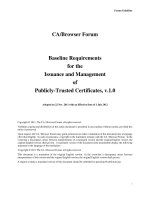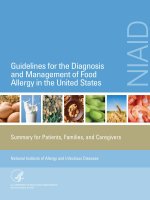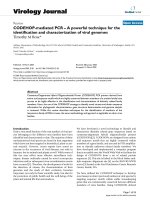Rules for the use and omission of articles
Bạn đang xem bản rút gọn của tài liệu. Xem và tải ngay bản đầy đủ của tài liệu tại đây (8.24 KB, 1 trang )
Rules for the use and omission of articles
Articles are often misused. The overuse and misuse of articles will cause ungrammatically. Nonetheless, most
article errors are not serious. Even if you omit all the articles, you will still be able to convey the meaning. Still,
students should learn the correct use of articles. Article errors can lower your scores in tests like TOEFL and
IELTS in addition to making your writing look unprofessional.
If you don’t know how to use articles, you should consult a good grammar book. My attempt to make these rules
as simple for ESL students as possible runs as follows:
Is it a proper or a common noun? A proper noun does not take an article. Examples are: John, Paris and
English. A singular common noun always needs an article or another determiner with it. We can say a boy, this
boy or my boy. But we cannot say just boy.
Remember that a noun can be proper in one sentence and common in another sentence; so, it is useless to label
a particular noun ‘proper’ or ‘common’.
If the common noun is not the name of one particular person or thing, it requires the indefinite article ‘a’ when
the noun is singular. When the noun is plural, ‘a’ is never used and usually no article is required.
There are several phrases, most of them prepositional, in which nouns, usually common, must be used without
articles. Examples are: in view of (NOT in the view of), on condition that (NOT on the condition that) etc.
Stay on top of your writing! Download our grammar guide from www.englishgrammar.org to stay up-to-date.
Powered by TCPDF (www.tcpdf.org)









